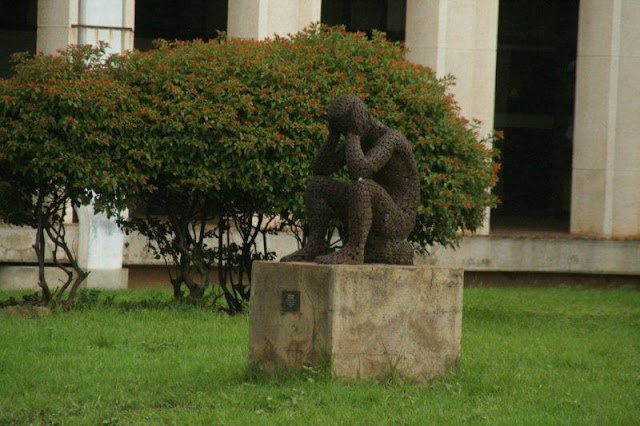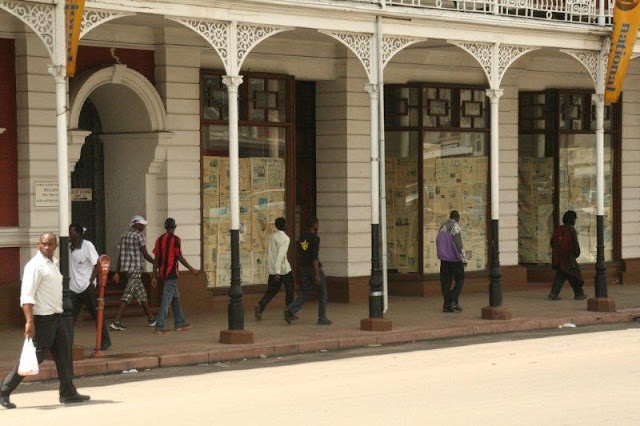OK, I know this is called the Hwange blog but we were in Bulawayo
Our house is in a small-scale farming area right on the edge of Bulawayo

As you can see, there is not much modern architecture in Bulawayo

A lot of the other transport is pretty old-fashioned……

And the “Luna Park


Not much traffic in that picture and the same applies even in the central business district where there is still room for hand-carts (known throughout Zimbabwe

There is a clothes market near the City Hall every Saturday. The clothes range from heaps of second-hand to smart new and Sue and our daughter Alison seem to enjoy searching for bargains….

I spent two hours sitting in the car waiting for them. Close to where I was waiting is this statue. That's exactly how I felt as well........


Back at Sinamatella after three relaxing days at home I found a big anti-poaching operation about to get under way. A large number of police support unit, rangers from Main Camp and Umtshibi and rangers from Sinamatella are being deployed for a while to do an anti-poaching sweep and it is intended that the operation will be repeated as often as possible. Recently the poachers have been targeting elephants as well as rhino. Hwange has plenty of elephants but that’s no reason to let them be killed of course so anti-poaching operations will continue as long as there are people elsewhere in the world who put a high value on tusks, bones and horns.












